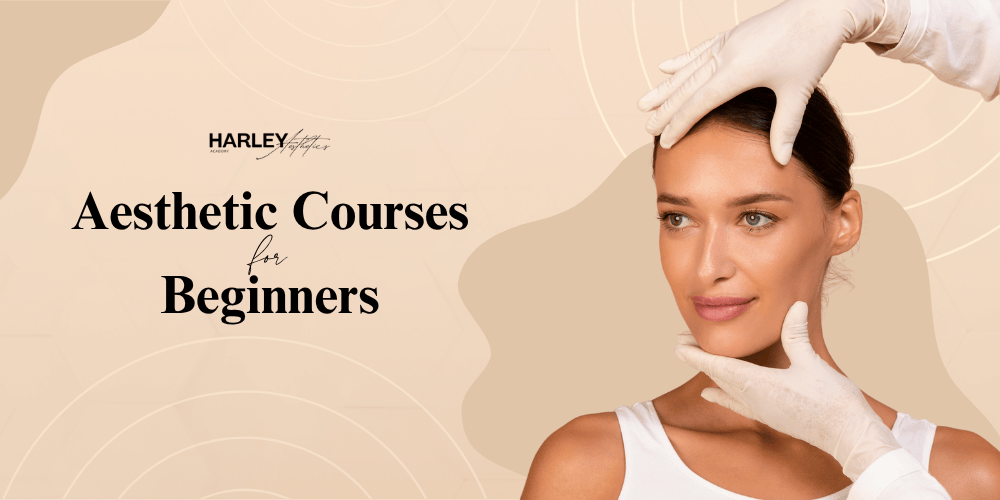July 2025 Sale – 40% Off Get Offers

When you’re searching for guidance on aesthetic courses, particularly from the standpoint of an aesthetic training for beginners’ perspective, it’s only natural to feel excited and perhaps a little overwhelmed. What exactly will you learn? Is aesthetics right for you? How do you begin your journey? If you’ve asked yourself questions like these, you’ve come to the right place. As someone who’s spent time chatting with tutors, recent graduates, and curious students in the UK, I want to walk you through the essentials, without jargon, just genuine advice, real stories, and helpful insights. And yes, I’ll share where you can take that very first dive into the world of injectables, dermal fillers and more.
Let me guess, you’re intrigued by the idea of combining medical know-how with artistry, offering treatments that help boost confidence, enhance natural beauty, and transform patients’ lives. That’s often the spark. Whether it’s smoothing out fine lines with anti‑wrinkle injections or subtly sculpting cheeks with dermal fillers, the satisfaction of seeing a smile of gratitude can be profound.
In the UK, demand for non‑surgical aesthetic treatments keeps rising. There’s a definite gap for confident, well‑trained practitioners who deliver both safe procedures and great results.
Absolutely, provided you approach aesthetic training methodically. Aesthetics isn’t just a fad; it’s a growing health‑and‑wellness field. But as a beginner, it’s important to start with solid training, understand the legal and ethical aspects, and build real‑world experience. The blend of science, artistry, and patient care makes it endlessly fascinating. And yes, it can be financially rewarding, too – although that’s not the only reason to pursue it.
Not at all, though healthcare professionals often start there. These days, aesthetic training is open to a broader range of practitioners – dentists, paramedics, pharmacists, and even experienced beauty therapists in some cases. The key is strong foundational knowledge (like Anatomy & Physiology) and a legal scope of practice in your region.
That’s you. And that’s great. Courses tailored for beginners don’t expect prior cosmetic experience; they guide you from the ground up. You’ll cover subjects like skin physiology, infection control, facial anatomy, consultation skills, product types, injection techniques, and aftercare, all under expert supervision.
Starting from scratch can feel like climbing Mount Pleasant (or Snowdon, whatever you fancy). But here’s how to make it manageable:
Begin with who’s teaching. A course led by medically qualified professionals – GPs, nurse injectors, cosmetic specialists, is a good sign. Also, check if they are members of recognised bodies like the Joint Council for Cosmetic Practitioners (JCCP) or hold BAPRAS Association credentials.
A solid beginner aesthetic training programme should combine classroom theory and hands‑on practice. Too much bookwork means you’ll struggle when injecting; too little, and you won’t understand why.
Look for courses splitting modules across multiple days. Large cohorts dilute attention; small groups (~6‑8 participants) ensure you get individual feedback.
Beginners benefit from support after certification finishes. Whether it’s webinars, refresher practicals, or mentoring with experienced injectors, this backs up confidence and continued learning.
Check if the course gives you time to practise on real clients under supervision. Simulations are useful, but nothing beats real anatomy and live injecting.
Let’s break down what a structured beginner aesthetic training might look like:
There’s one foundation programme many beginners find particularly helpful: the Pathway to Aesthetics course. You can explore it in depth here, and what’s great is it’s tailored for absolute beginners, offering a thorough grounding in everything above.
From what previous students describe, this kind of course walks you gently from the theory essentials of skin, anatomy, safety and legal regulation into the excitement of hands‑on toxin and filler administration. And best of all, there’s continued mentorship and a collegial community to help support the tricky first few client consultations.
Here are some questions we’ve heard repeated time and again.
Technically, not always, but most UK providers expect you to have a background in healthcare or at least a Level 4 qualification. It shows you’re responsible and understand patient safety. Some beauty therapists may qualify via “top‑up” programmes that cover local anaesthetic injection, A&P refreshers, and medical dermatology to bring them up to speed.
That depends. If your current professional registration (NMC, GDC etc.) allows it, and you’ve logged core procedures under supervision, you might begin small. Others prefer shadowing established injectors until confident. It’s wise not to rush, your reputation and patient safety matter more than speed.
Insurance companies usually require proof of competence, mentorship, and CPD. Some insurers mandate further supervised experience before approving you. Plus, certain procedures (like chemical peels or advanced cannula work) may need separate cover.
Start with what interests you most. Some beginners begin with toxins only – easier anatomy, great results for many clients. Filler courses come next, introducing volume and sculpting. Combined courses (toxin + filler) are efficient but intensive. If you’re committed, a dual‑track beginner programme could suit. Just know it demands more of your focus.
There are Level 7 Diplomas in Clinical Practice in Aesthetic Medicine worth considering, but they’re high‑level and usually for doctors or dentists looking to specialise. For most beginners, a solid foundation course + ongoing CPD is appropriate.

As someone who’s asked alumni what stood out most from their early training, here are the recurring themes:
Embarking on aesthetic courses isn’t just about mastering injection drills – it’s about thinking of the big picture.
You might be thinking: “There are so many courses, how do I just start?” That’s totally valid. Here’s a simplified, gentle approach:

As mentioned earlier, the Pathway to Aesthetics programme is an excellent starting point available via their website here- designed specifically to walk beginners through toxin and filler fundamentals. It’s a dedicated and supportive route, combining practical confidence and theoretical depth.
At the same time, continue researching additional post‑course workshops-topics like lip filler finesse, jawline sculpting with cannulas, and skin boosters. That ongoing learning will help you build momentum once you complete your initial training.
From feedback, a few consistent threads emerge:
Want to be ready even before you book?
Once you’ve completed your first foundation course and feel comfortable with basic toxin and filler treatments, the journey continues:
Becoming an aesthetic practitioner isn’t a tangled mystery – it’s a progressive, grounded, and rewarding path. You:
If your interest has been sparked, there’s a place to start: that beginner aesthetic course, an ideal blend of theory and practice, set up for those just beginning their journey. When you’re ready, explore the Pathway to Aesthetics programme here. It might be just the course that sets you on the path from curious student to compassionate practitioner.
© Harley Aesthetics Copyright 2025. All Rights Reserved.